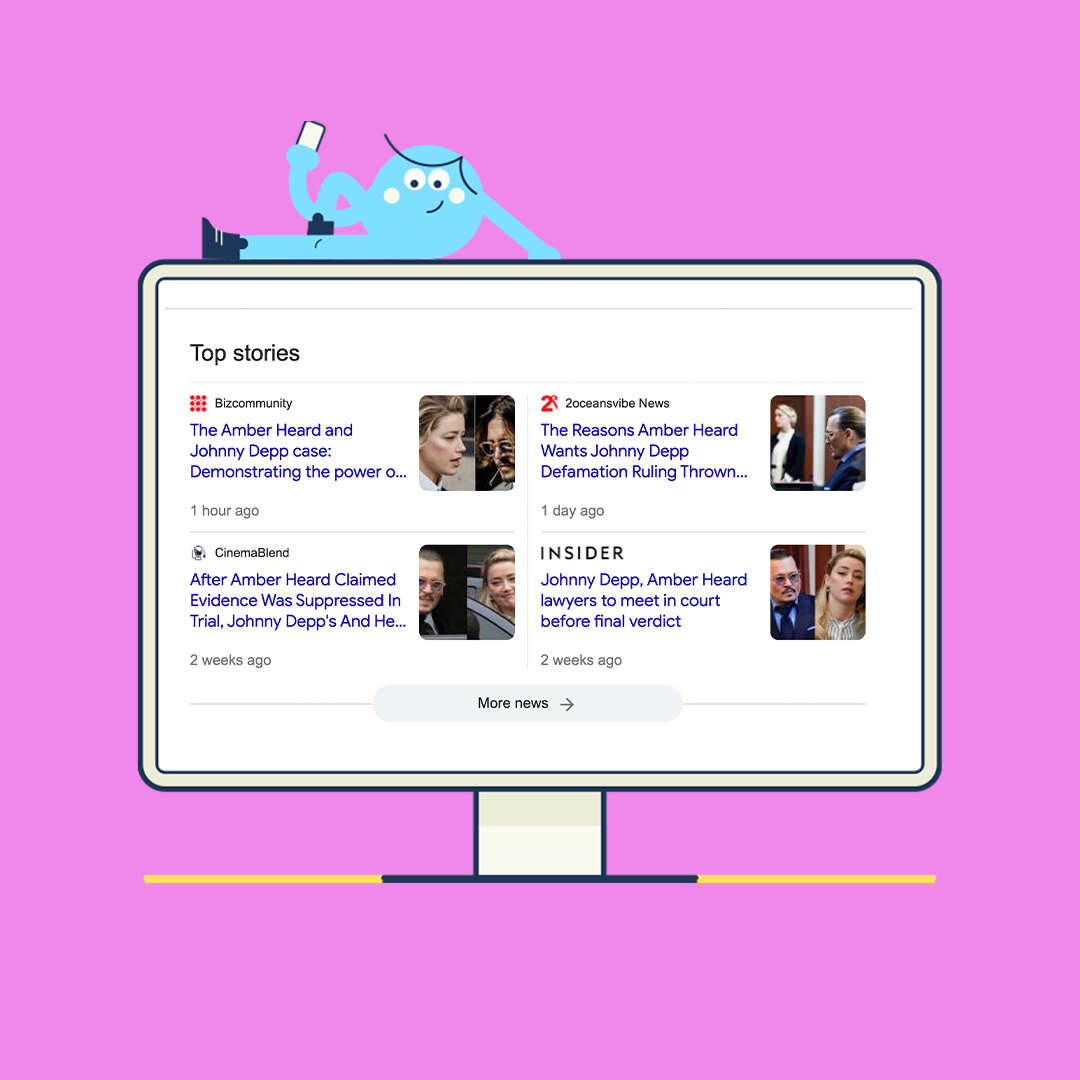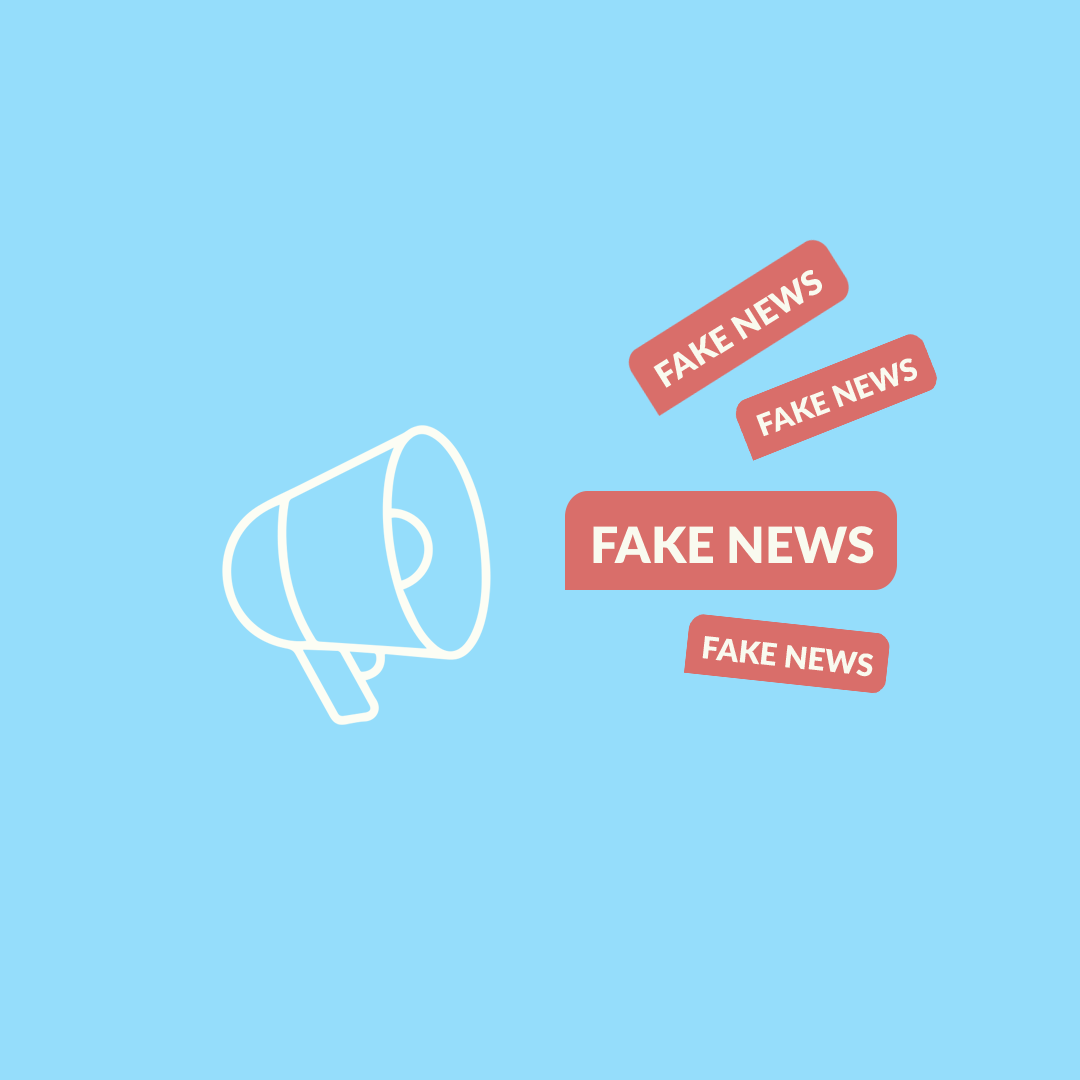– Written by Havana Dauncey.



Have your social media feeds been flooded with replays and parodies of the Johnny Depp vs Amber Heard trial for the last 2 months? Or has your newsfeed been overflowing with all the expert opinions and juicy insider details? Well, with it being the largest celebrity trial since OJ Simpson, it’s been pretty impossible to miss, whether you wanted to or not.
With almost 84k hours of the trial watched on YouTube, this cultural phenomenon has taken the world by storm. It’s completely overwhelmed arguably much more important issues, such as the Ukraine war.
While we aren’t particularly concerned with the details and outcome of the trial, what has captured our attention is rather the rabid response of the media to the Johnny Depp vs Amber Heard trial. More importantly, we’re interested in what this case can teach us and our children about the relationship between fake news and the media. This is an essential lesson for any teen and pre-teen online.
So let’s dive in and see what we can uncover!
The role of the media in the trial
While the media’s role in the jury’s decision is still debated, its role in the public view of the trial is undeniable. Like the viewers, the media chose sides and crafted their narratives to suit their side, often resorting to fake news and misinformation. The lines were quite clear:
- Social media and the general public tended towards team Johnny
- Reputable news sources and published professionals leaned towards team Amber
There was not much room to sit in the middle. And it was particularly fascinating to see the tools used in the media to fight for each side.
For example, hashtags played a large role. The hashtag #JusticeForJohnnyDepp amassed over 21 billion views on TikTok, while #JusticeForAmberHeard only gained just over 100 million. Other hashtags like #AmberHeardIsAPsychopath and #JusticeForAllWomen were also used by respective sides to fight their battle.
Another big propagator on social media was the use of memes, TikTok trends, and parodies. It was mostly targeted against Amber Heard, with re-enactments mocking her testimony, rhyming parodies of her words, and body language ‘experts’ sharing their ‘qualified’ opinion on whether Amber was lying or not. Even Saturday Night Live had a go at it.
Johnny Depp vs Amber Heard
But where Amber Heard was villainized on social media, Johnny Depp was deemed a hero. When Amber smirked, it was sarcastic and cruel, but when Johnny did the same, it was deemed witty and light-hearted. Social media focused on his child-like sweet tooth and innocent doodles but saw Amber furiously ‘pretending’ to write notes. Amber’s team of lawyers was mocked for every slip-up while Johnny’s team was celebrated for every small victory. The bias of social media was very clearly in Johnny’s favor.
However, you could say the opposite for published articles from reputable news sources in which the majority took the politically correct route of siding with Amber in the wake of the MeToo movement. Many saw this trial as representing the entire MeToo movement, rather than looking at the unique and individual context of the trial. Shocking clickbait headlines related to the trial were used to draw in readers and boost numbers.
Even more, this trial saw political groups taking advantage of the media coverage to push their agenda and gain attention from the masses by spreading fake news and misinformation.
For example, according to VICE, the Daily Wire, a notoriously conservative website founded by Ben Shapiro, spent tens of thousands of dollars on biased anti-Amber promotions on Instagram and Facebook. Additionally, members of both the feminist movement and men’s rights movement also took advantage of this trial to justify their opposing causes. This throws political propaganda into the mix as well.
What does this mean for the everyday person?
It means that people’s opinions and even what they believed as fact were heavily dependent on where they got their news and which media they were exposed to.
This trial showed that rational-thinking adults could be easily manipulated to believe fake news. Now imagine the effect of social media and other instances of media manipulation on young teens and children who are yet to learn how to distinguish between fact and fantasy.
In short, there didn’t seem to be much objectivity and sound evidence in the media surrounding the trial, holding both sides with equal weight and critically assessing both arguments. This resulted in an overwhelming amount of examples of fake news and misinformation.
Examples of fake news from the trial
Instances of fake news surrounding the Johnny Depp vs Amber Heard trial ranged from baseless claims to outright absurdities. You’ll find that the common denominator is a lack of sound evidence.
Here are some examples of actual stories from both social media and the news that made headlines during the trial and why we consider them fake news:
- A video circulated on TikTok of a woman at Johnny Depp’s Lone Ranger movie premiere in 2013 who looked like Amber Heard’s lawyer, Elaine Bredehoft, claiming she took the job of Amber’s lawyer to be close to Johnny because she was a fan.
- Despite getting over 11 million views on TikTok, there’s no evidence that the woman in the video is Elaine Bredehoft, nor is it clear that they even look alike with the poor quality of the video.
- Another video on Youtube was posted claiming that Amber Heard’s other lawyer, Benjamin Rottenborn quit mid-trial, fuelling headlines.
- There was no evidence of this claim, the video didn’t even try to support the claim, and Benjamin Rottenborn remained in court for the entire trial.
- Social media users claimed that Amber Heard was copying Johnny Depp’s court outfits to troll and play mind games with him.
- There’s no evidence for the claim, nor is it possible to assume Amber’s intention for her outfit choices.
- A video circulated on TikTok claiming that Amber Heard posed for a photo while blowing her nose during her testimony.
- There’s no evidence of any photo being taken, and by watching the video, it’s clear that while blowing her nose, the screen in front of her lit up with an image, appearing as a ‘flash’, causing her to pause and look at the screen.
- Another rumor on social media claimed that Amber Heard stole lines from the movie, The Talented Mr. Ripley, during her testimony.
- There’s no evidence of this, and if you compare the two videos, it’s clear that Amber did not say the lines word for word, as the rumor claimed.
- TikTok users speculated on romance rumors between Johnny Depp and his lawyer, Camille Vasquez.
- There was no evidence of this claim, and Camille has since debunked the rumors.
- Post-trial, clickbait headlines claimed that Johnny Depp branded his daughter, Lily-Rose Depp, as cunning and seemingly called her out for her silence during the trial through his latest artwork.
- Only if you read to the bottom of the article, do you see that this is not the case at all.
These are just a fraction of the endless rumors that caught wind during and after the trial. As you can see, with just a bit of critical thinking, some search for sound evidence, and checking of sources, these rumors are easily debunked.
What we can learn about fake news
So with all that being said, how does this relate to our children’s experience online and what can we learn about fake news?
Well, it appears that facts have become opinions and opinions have become facts. This completely blurs the line between what’s real and what’s not, making it incredibly difficult for both teens and adults to discern the truth online.
This trial was also another example of how people online will spread disinformation to gain media attention. Users of social media, YouTube, and Twitch noticed the attention that anti-Amber content received and jumped on the bandwagon. Even news articles found ways to capitalize on the attention with clickbait headlines. This shows how some people online will come up with an outrageous claim with little evidence and regard for the consequences of their claim all to gain likes and grow their accounts. It can be very easy for followers and fans of these accounts to believe these stories, especially teens who may look up to them.
What’s confirmation bias?
This trial also highlighted a prevalent cause of fake news — confirmation bias. This is when people take in content or evidence and spin it to support their bias, belief, or agenda. Confirmation bias was littered across social media and the news throughout the trial, coming from both sides. It shows that unless you critically assess the motivations and arguments of a source, it’s very easy to be manipulated by the stories that fall into the confirmation bias trap.
Lastly, and most heartbreakingly, the fake news and trial by social media had a dehumanizing effect that promoted a lack of empathy among users online. Despite the trial surrounding very serious, emotional, and personal topics such as domestic violence and abuse, many users saw the people in this trial as objects they could mock and use for entertainment and personal gain, disregarding the human beings and their lives that they might be destroying. This lack of empathy can spread almost as fast as the rumors and embed itself in the young minds of social media users.
How can we use this trial to teach children about the dangers of fake news?
It’s clear that, if left unchecked, fake news and disinformation can be incredibly harmful to not only the people involved but to our children’s ideas and attitudes about the world. So how can we empower them to not be manipulated by fake news and the media?
Here are some things you can do:
- Show them how to check their sources and their sources’ sources.
- Teach them how to tell the difference between trustworthy, reputable sources and sources, like social media, where anyone can post anything regardless of its validity.
- Teach them critical thinking skills so that they can discern fact from falsehood by themselves.
- Teach them about confirmation bias and how it appears in the media.
- Show them how to report misinformation on social media and how to avoid spreading misinformation online.
- Remind them that the people mocked online are still human beings and should be respected.
While the Johnny Depp vs Amber Heard trial brought out the worst of the media, hopefully, we can still take something positive from it. We can use it as a reminder to make our children aware of the fake news and misinformation floating around social media and the news. We can also use it as a learning tool to teach them the skills to overcome fake news so that they can be safer and smarter online.
With the potential of an appeal, both this trial and the fight against fake news are far from over. So let’s keep fighting for our children’s safety online — click here to find out more about digital safety for teens and pre-teens.

